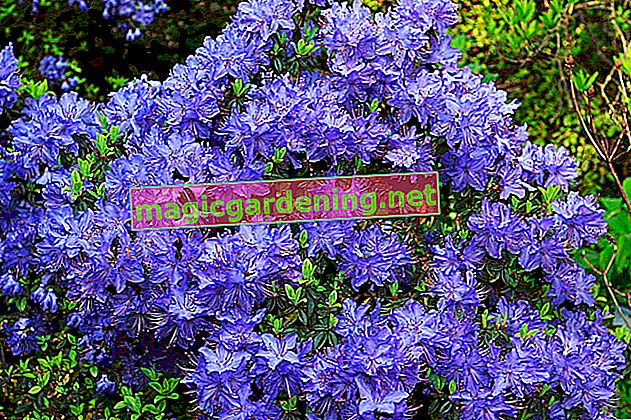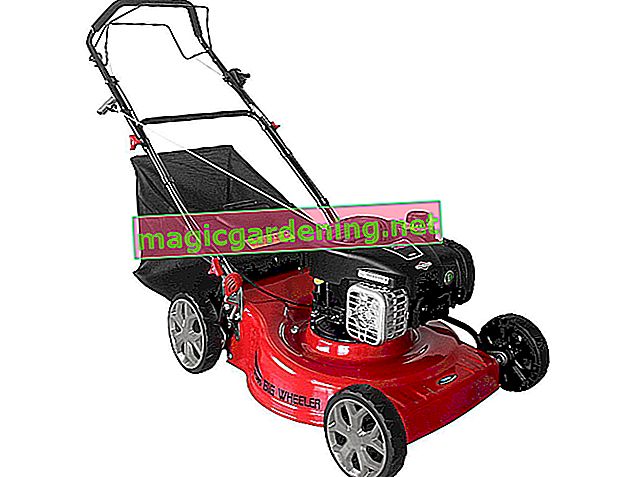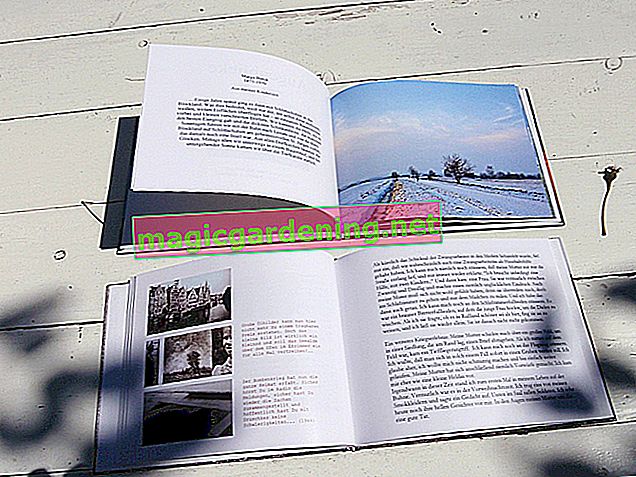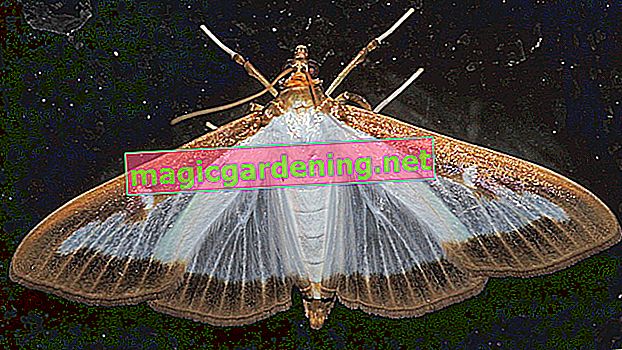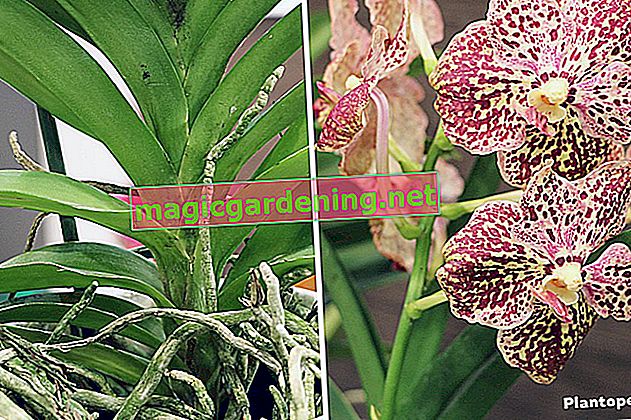
origin
Vanda describes a genus of orchids that contains around 80 species. The range of the species extends from India to the Philippines and the Indonesian islands. In Thailand, Myanmar and Yünnan there are centers of biodiversity. Here, the plants colonize forests that are always damp or alternately damp. They occur preferentially in the lowlands and conquer high altitudes in low mountain regions.
also read
- Vanda orchid propagation - this is how it works with cuttings
- This is how the Vanda orchid thrives in the glass - tips for the best care
- How to get your Vanda orchid to bloom - Useful care tips
The area of the Vanda orchids is not limited to the tropical and subtropical regions in Southeast Asia. Some species colonize habitats in northeast Australia. Many wild forms are cultivated. Cultivated forms are better suited than ornamental plants.
growth
Vanda species can grow into stately specimens that can reach heights of 150 centimeters. Most of the ornamental plants reach heights of growth between 50 and 80 centimeters. They form a main shoot that does not branch. Numerous side shoots emerge from the main shoot.
Vanda orchids grow as epiphytes on woody plants to get more light in the dense forests. Your roots are specialized in this way of life. They are used to anchor on branches and need air to survive. With the help of the long root system, the plants draw moisture from the air.
leaves
The fleshy, thickened leaves feel leathery. They are dark green in color and shiny. At their base they are folded in a V-shape along the midrib. The leaf blade is spread flat towards the tip. It has a narrow, linear shape and ends in a drawn-in point. The leaf blade merges into the leaf base. At this point the orchids develop a separating fabric.
blossom
In the leaf axils, shoots develop on which large individual flowers develop. The wild forms are monochrome, while hybrids develop multicolored petals with attractive drawings and patterns. They give off an intense fragrance. The flowers follow a five-fold structure. The petals are free. They are shaped differently and can appear twisted at their base so that their back faces forward. Often the edge of the petals are wavy or curled.
Heyday
Vanda orchids bloom from spring through autumn. Its flowering period extends over two months, which can repeat three times until autumn. There are varieties with tiny flowers and hybrids with strikingly large petals. They can bloom in white, yellow, orange, red, purple, or blue.
Good to know:
- Flowers wilt only after several weeks
- Vandeen are pollinated by wooden bees
- extensive range of colors and sizes within the flowers
use
These ornamental plants beautify interiors and warm houses with their striking flowers and intense aroma. They thrive in heated greenhouses with high humidity. In optimal conditions, Vandeen are suitable for outdoor cultivation during the summer months.
Is Vanda Poisonous?
Vandeen are classified as toxic. You shouldn't cultivate the plants if there are children or pets in your household.
Which location is suitable?
As a growth in tropical and subtropical regions, Vandeen prefer high humidity. The location should be partially shaded and bright and ensure warm temperatures. There are some species that can tolerate normal room temperatures. Cultivation is very difficult on a north-facing window sill.
What soil does the plant need?
You do not need a substrate to keep Vandeen, as the plants are rooted on branches in their natural habitats. The orchids should be grown hanging in lattice baskets or pots with large openings. Here the aerial roots can grow freely and hang down.
sowing
Propagation via seeds is carried out by specialist companies as it is very time-consuming and time-consuming. The flowers must be pollinated by hand. This is done with a toothpick that is streaked over the male flower organs. The pollen is then applied to the scar. Vandeen need about 20 months from fertilization to fruit ripeness. When the fruit capsules have dried out, they can be harvested.
In order for the seeds to germinate, sterile conditions are necessary. All utensils must be free of fungal spores, bacteria and viruses. If the planter or nutrient medium is contaminated, the germs often grow faster than the seeds and kill them. Not all fungal spores are harmful. Vandex seeds are dependent on special fungal spores. Without this community, the seeds cannot survive. Attempts at cultivating on collected pieces of bark have proven successful in many cases.
Cuttings
Propagation using cuttings from the head requires a sure instinct, as incorrect procedures can damage both the mother plant and the cuttings. A healthy plant is divided into two plants in the middle of the shoot. The upper part should have two to three aerial roots so that the cutting is viable. The lower part also needs enough roots to survive. With good care, it will develop side shoots after a few months, on which fresh leaves will appear.
Put the head cutting in a pot lined with sphagnum moss that has enough holes. The moss can store and release moisture so that the plant can develop fresh roots better.
Vanda in the pot
Vandeen are cultivated hanging, so that the roots grow freely and are exposed to air circulation. A pot made of transparent glass with enough holes is ideal. There are special clay pots with window-like recesses. They have the advantage over glass that the material stores water and releases it into the air. In this way you can ensure high humidity. Cultivation in plastic pots is also possible. These are lined with styrofoam for a better water balance.
balcony
Vanda orchids can be placed on the balcony during the summer months. The outdoor location promotes healthy root growth, provided there is sufficient humidity and warmth. The orchids are less sensitive to temperature fluctuations between day and night than related species. As soon as the temperature drops below ten degrees Celsius at night, the plant should be brought in.
In the greenhouse
Vandeen come from tropical regions and like warm temperatures in combination with high humidity. If these conditions cannot be guaranteed, cultivation in the greenhouse is recommended. The chance of blooming is very high here.
Ideal conditions:
- Temperature between 25 and 30 degrees Celsius
- Humidity of 90 percent
- flooded with light
Pour Vanda
Twice a week, the aerial roots are completely immersed in the water bath. The Vanda stays there for 30 minutes so that the roots can soak up. Make sure that the water is room temperature. After the water bath, the water must be able to drain well. The aerial roots should be completely dry between the immersion procedures. You can recognize dry roots by their grayish color. Roots soaked in water shimmer green. You will then become soft.
Vandeen prefer a humidity of at least 60 percent. To meet this requirement, you should spray the plant with water daily. Water must not collect in the leaf axils, as this can lead to rot. During the dormant period in the winter months, spray the plant every few days.
Fertilize Vanda properly
Nutrients are made available to the Vandeen through the immersion bath. During the growth phase between March and October, the orchids enjoy fertilization every three weeks. It stimulates flower formation and promotes healthy growth. Use a special fertilizer for orchids and mix it with the immersion water.
Cut Vanda properly
Regular pruning is not necessary with Vandeen. As soon as the flower shoots have completely dried up to the base, they are shortened to two centimeters. This measure promotes further flower development. Pruning measures at an early stage harbor the risk of viruses and fungi colonizing the interface.
How do I transplant properly?
When the roots have completely taken up the vessel, you can treat your Vanda to a new pot. This is necessary every two to three years. In the course of this measure, injured roots or rotten areas are removed. If you keep your orchid in a plastic container with styrofoam, the material should be replaced several times a year.
Pests
Under the wrong site conditions, an infestation by scale insects, mealybugs or mealybugs can occasionally occur. Check the humidity and temperature and adjust maintenance accordingly. The pests can be combated with an oil-based agent which is sprayed onto the leaves. Tea tree oil or neem oil are good for making an ecological pesticide
Yellow leaves
When the temperature drops below ten degrees Celsius, the leaves often develop yellow spots. These symptoms can also indicate insufficient fertilizer or conditions that are too dark. Check the location and give the Vanda a better place. As a light-hungry plant, the orchid prefers a sheltered place by the south-facing window.
Vanda doesn't bloom
Young plants grown from head cuttings need some time for the first flowering shoots to develop. Older specimens are more likely to flower. In order for the orchids to bloom, the care must be right. If a Vanda does not bloom, it is often because the humidity is too low and the conditions are too dark.
Tips
If a flower sprout breaks, you can put it in a vase filled with water. The flowers stay there for several weeks.
sorts
- Vanda coerulea: Flowers from October to November in shades of blue and purple. Between 20 and 150 centimeters high.
- Vanda cristata: Yellowish-green flowers, striped brown-red on top, fragrant. Flowering period between March and June. Up to 20 centimeters high.
- Vanda denisoniana: white to greenish-white flowers with orange spots, fragrant.
- Vanda pumila: Small species. Whitish-green flowers with brown markings. Up to 15 centimeters high.




